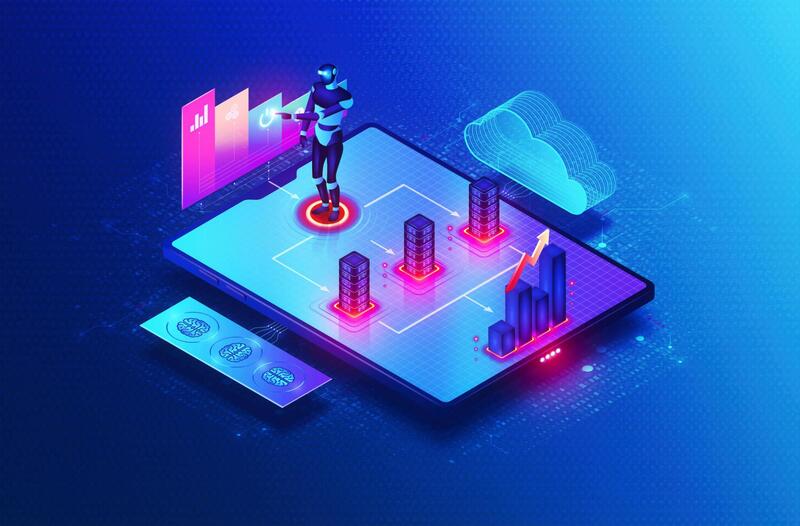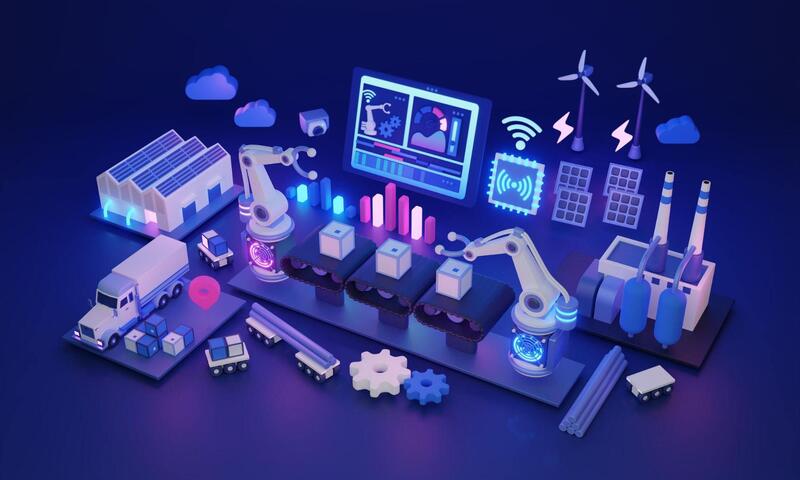Exploring the Impact of AI and Machine Learning on Web Development: Cutting-Edge Trends and Innovations
Introduction:
In today's rapidly evolving digital landscape, integrating artificial intelligence (AI) and machine learning (ML) into web development practices is reshaping how we interact with and experience the web. From personalized user experiences to automated content generation, AI and ML drive innovative solutions that enhance efficiency, effectiveness, and user satisfaction. In this blog post, we'll explore the transformative impact of AI and ML on web development, highlighting the latest trends and innovations shaping the industry's future.
1. Personalized User Experiences:
One of the most significant contributions of AI and ML to web development is the ability to deliver personalized user experiences. AI-powered algorithms can dynamically adapt website content, layout, and recommendations to suit individual users' needs and interests by analyzing user behavior, preferences, and interactions in real-time. According to a study by Salesforce, "79% of consumers are more likely to engage with offers that are personalized based on their previous interactions with the brand."
Creating personalized user experiences is crucial for engaging and retaining website visitors. AI and ML technologies enable websites to dynamically adapt their content, layout, and recommendations based on individual user preferences, behaviors, and demographics.

Behavioral Analysis and Predictive Modeling:
AI algorithms analyze user behavior patterns to gain insights into their preferences and interests, enabling predictive modeling for real-time customization.
Contextual Adaptation and Personalization:
Websites consider contextual factors like device type, location, and time of day to deliver relevant content and offers tailored to users' situations.
Dynamic Content Generation and Customization:
ML-powered tools generate personalized content variants and customize layouts based on user's preferences and browsing history.
Continuous Learning and Optimization:
AI-driven personalization continuously learns from user feedback and engagement metrics to refine recommendations over time, ensuring relevance and engagement.
2. Automated Testing and Quality Assurance:
Traditionally, testing and quality assurance in web development have been time-consuming and labor-intensive processes. However, AI and ML are revolutionizing this aspect by enabling automated testing frameworks to identify bugs, vulnerabilities, and performance issues more efficiently and accurately than manual testing methods. For instance, companies like Test.AI are leveraging ML algorithms to automate the generation and execution of test scripts, significantly reducing the time and effort required for testing cycles. Per Capgemini, "63% of organizations have experienced an increase in the accuracy of QA testing due to AI and ML technologies."

Traditional web development testing and quality assurance processes can be time-consuming and labor-intensive. AI and ML technologies are revolutionizing this aspect by enabling automated testing frameworks that identify bugs, vulnerabilities, and performance issues more efficiently and accurately.
Efficiency and Accuracy:
AI-powered testing frameworks can analyze vast amounts of data and execute test scripts precisely, reducing the time and effort required for testing cycles.
Continuous Integration and Deployment:
Automated testing enables seamless integration with continuous integration/continuous deployment (CI/CD) pipelines, facilitating faster and more frequent releases without compromising quality.
Predictive Analysis and Risk Assessment:
ML algorithms can predict potential risk areas and prioritize testing efforts based on factors such as code complexity, historical data, and criticality of features.
Dynamic Test Generation and Maintenance:
AI-driven tools can automatically generate test cases, adapt to changes in the codebase, and maintain test suites to keep pace with evolving software requirements and functionalities.
Enhanced Test Coverage and Scalability:
Automated testing ensures comprehensive test coverage across different platforms, devices, and environments, scaling effortlessly to accommodate the growing complexity of web applications.
3. Content Generation and Curation:
Content is king in the digital realm, and AI and ML are increasingly vital in content generation and website curation. Natural Language Processing (NLP) algorithms can analyze vast amounts of data to generate high-quality, relevant content, such as product descriptions, blog posts, and news articles, with minimal human intervention. AI-powered content curation tools can aggregate and filter content from various sources to provide users with personalized and engaging content recommendations. According to a report by Gartner, "By 2025, 30% of digital content will be created by machines."
Content generation and curation are vital aspects of web development, and AI and ML technologies are reshaping how content is created, managed, and delivered to users.

Natural Language Processing (NLP) Algorithms:
NLP algorithms analyze vast datasets to generate high-quality, relevant content such as product descriptions, blog posts, and news articles with minimal human intervention.
Automated Content Curation:
AI-powered content curation tools aggregate and filter content from various sources to provide users with personalized and engaging content recommendations based on their interests and preferences.
Personalized Recommendations:
ML algorithms analyze user behavior and preferences to deliver personalized content recommendations, enhancing user engagement and satisfaction.
Dynamic Content Adaptation:
AI-generated content can be dynamically adapted to suit different user segments, devices, and platforms, ensuring consistency and relevance across various channels.
Scalability and Efficiency:
AI-driven content generation and curation processes are scalable and efficient, enabling businesses to produce and manage large volumes of content with minimal resources and overhead.
4. Enhanced Security and Fraud Detection:
Cybersecurity is a growing concern for businesses and consumers alike, and AI and ML are instrumental in fortifying web applications against security threats and fraud. ML algorithms can analyze patterns of user behavior to detect and mitigate potential security risks, such as phishing attacks, data breaches, and identity theft. Moreover, AI-powered fraud detection systems can identify anomalous activities and transactions in real time, enabling proactive responses to mitigate financial losses and protect sensitive information. According to a study by Juniper Research, "AI-driven cybersecurity solutions are expected to save businesses $2.3 trillion by 2030."
AI and ML technologies play a crucial role in strengthening web application security measures, detecting fraudulent activities, protecting sensitive data, and mitigating financial risks.

Behavioral Analysis and Anomaly Detection:
ML algorithms analyze patterns of user behavior to identify anomalies and suspicious activities, enabling proactive detection of security threats such as phishing attacks, data breaches, and unauthorized access.
Real-time Monitoring and Response:
AI-driven security solutions monitor web traffic and transactions in real-time, allowing for immediate detection and response to potential security breaches and fraudulent activities before they escalate.
Adaptive Authentication and Access Control:
AI-powered authentication systems leverage machine learning to adaptively assess the risk level of login attempts based on various factors such as device fingerprinting, geolocation, and user behavior, enhancing the accuracy and effectiveness of access control mechanisms.
Fraudulent Transaction Detection:
ML algorithms analyze transaction data to detect fraudulent patterns and anomalies, enabling businesses to identify and prevent unauthorized transactions, credit card fraud, and identity theft in real time.
Continuous Learning and Adaptation:
AI-driven security solutions continuously learn from new data and evolving threats to improve detection accuracy and stay ahead of cybercriminals, ensuring robust protection against emerging security vulnerabilities and attack vectors.
5. Future Implications and Challenges:
While the integration of AI and ML holds immense promise for the future of web development, it also presents various challenges and considerations. Data privacy, algorithmic bias, and ethical implications must be carefully addressed to ensure responsible and equitable use of AI technologies. Moreover, the rapid pace of technological advancement requires web developers to continuously upskill and adapt to new tools, frameworks, and methodologies to stay competitive.
As AI and ML technologies advance, their integration into web development brings forth exciting opportunities and significant challenges that developers and businesses must navigate.
Opportunities for Innovation:
The future of web development promises unprecedented innovation and creativity fueled by AI and ML technologies. The possibilities are limitless, from advanced personalization and predictive analytics to immersive user experiences and autonomous systems.
Improved Efficiency and Productivity:
AI-driven automation streamlines development workflows, reduces manual intervention, and accelerates time-to-market for web applications. This enhanced efficiency empowers developers to focus on high-value tasks like innovation and optimization.
Ethical and Regulatory Considerations:
As AI technologies become more pervasive in web development, ethical and regulatory concerns around data privacy, algorithmic bias, and responsible AI adoption emerge. Developers and businesses must prioritize ethical AI principles and adhere to regulatory frameworks to ensure fair and transparent use of AI.

Skills Gap and Training Needs:
The rapid evolution of AI and ML technologies necessitates continuous upskilling and training for web developers to stay abreast of the latest tools, frameworks, and best practices. Bridging the skills gap and fostering a culture of lifelong learning are essential for effectively navigating the future landscape of web development.
Security and Privacy Challenges:
Increased susceptibility to security threats and privacy breaches comes with greater reliance on AI-driven systems. Developers must implement robust security measures, such as encryption, access controls, and secure coding practices, to safeguard sensitive data and protect against cyberattacks.
Societal Impact and Job Displacement:
The widespread adoption of AI and automation in web development may disrupt traditional job roles and workflows, leading to concerns about job displacement and socioeconomic inequality. It is crucial to address these challenges proactively through reskilling initiatives, workforce development programs, and policies that promote inclusive growth and economic empowerment.
Conclusion:
In conclusion, the incorporation of AI and ML technologies into web development practices is revolutionizing the way we design, build, and experience the web. From personalized user experiences to automated testing and content generation, AI-driven innovations drive efficiency, effectiveness, and innovation across the digital landscape. As we look towards the future, web developers and businesses need to embrace these advancements responsibly and proactively address the challenges and considerations they entail
Newsletter to recieve
our latest company updates
Comment